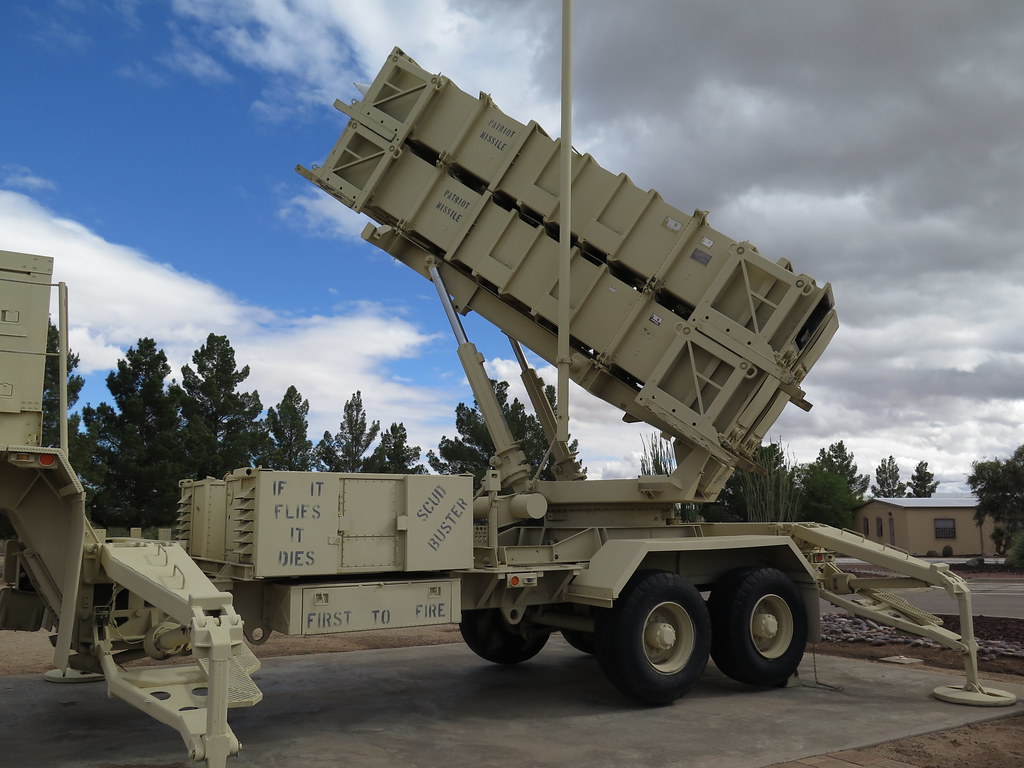
The recent Russian air missile attack conducted on the early morning of May 16 against Kyiv has sparked a new area of discourse from a military perspective. According to online claims, the Ukrainian MIM-104 Patriot system responded by launching 30 interceptor missiles.
In evaluating the defensive measures taken during this brief two-minute engagement, it becomes imperative to consider the magnitude of the interceptors expended. By rough estimation, this defensive maneuver alone would have incurred a minimum cost of $120 million. Therefore, it is crucial to shift the focus of inquiry towards the quantity of interceptors deployed.
Based on reliable information released by Lockheed Martin in 2022, the company’s annual production of PAC-3 missiles amounts to approximately 500 units. This signifies that Kyiv utilized six percent of its annual interceptor missile production within a mere two-minute timeframe (equivalent to 120 seconds) in the skies over Kyiv before the system incurred damage.
It is noteworthy that Lockheed Martin achieved full-rate production of the PAC-3 MSE missile in 2018, although the missile’s production dates back at least to 2014. Subsequently, in 2019, the Pentagon decided to entrust Lockheed Martin with an increased production mandate. Consequently, the decision was made to manufacture 500 PC-3 MSE missiles per annum.
Military experts are aware that the interception mechanism employed by the Patriot system differs slightly from other systems, such as Israel’s Iron Dome. To effectively intercept and neutralize a single missile, the Patriot system requires the launch of two interceptors. Furthermore, unlike the Iron Dome, the Patriot’s interceptors operate on a principle of direct body-to-body contact, rendering the interception process considerably more challenging. In contrast, the Israeli missile utilized by the Iron Dome self-detonates upon alignment with the incoming enemy projectile.
The Patriot’s reliance on direct body-to-body contact may be a contributing factor to its limited success rate. The firing of 30 missiles during the May 16th attack over Kyiv suggests that the system engaged with a minimum of 15 aerial targets. Alongside video footage of the attack, the opinions of certain experts who claim the Patriot faced multiple attack vectors provide further evidence of the intense airstrike.
The interception method of direct body-to-body contact raises significant doubts about the PAC-3 SME’s ability to successfully engage hypersonic missiles. However, if Kyiv’s assertions of shooting down six Kinzhal missiles are substantiated (currently lacking evidence), it would cast doubt on Moscow’s claim regarding the Kinzhal’s hypersonic capabilities.
Throughout the course of the war, we have observed the Ukrainian armed forces exerting tremendous strain on the weaponry supplied to them by Western nations. Reports, particularly regarding self-propelled artillery systems such as the American M109, the French Caesar, the German PzH 2000, and others, highlight this strain.
The events of May 16th also indicate a high operational tempo for the Patriot system. This raises several pertinent questions: Is there a Patriot stationed in proximity to Kyiv? Are there other air defense systems in the area, such as NASAMS or IRIS-T, and were they employed to cover the attack? The absence of their involvement, if Kyiv relies solely on a single Patriot system, would pose a serious predicament not only for Ukraine but also for the production capabilities of the United States, thereby reflecting on the proficiency of Patriot operators.
Presently, the operators of PAC-3 MSE systems include countries such as the USA, Ukraine, Germany, Japan, Kuwait, the Netherlands, the Republic of Korea, the United Arab Emirates, Bahrain, Poland, Qatar, Romania, and Sweden. A standard Patriot battery comprises eight launchers, each capable of accommodating up to four missile interceptors, resulting in a total potential deployment of 24 rockets.
Across the mentioned countries, there is a minimum of one Patriot battery per side, amounting to a collective count of 336 interceptors. However, it is essential to note that the actual number of batteries surpasses 100, as evidenced by the 1,106 launchers in the United States alone, with an additional 172 exported to other nations.
Open-access sources indicate that at least 100 interceptors are utilized annually worldwide, excluding Ukraine, during joint or national live-fire exercises.
Within 24 hours of the Patriot system launching 30 missiles, the Pentagon officially declared that despite the significant number of missiles fired from Kyiv, there remains an ample supply of interceptors globally. However, this information takes on a different perspective when considering the annual production of PAC-3 SMEs and the number of operators worldwide. It becomes evident that the United States, with its substantial stockpile of 1,106 launchers, possesses a considerable inventory of these missiles.
Based on open-source data, an estimated 10,000 missiles have been produced since 1969, but there is no available information regarding the quantity of active missiles from this total.
The fact that six percent of the interceptors were expended in a single incident already represents a significant figure. It also raises concerns about the ability of just two or four Patriot batteries to effectively counter Russian missile attacks. The issue lies not only in interception capability but also in the depletion and exhaustion of the total ammunition supply. Following the events of May 16th, the initial euphoria diminishes, highlighting the substantial challenges Ukraine faces in regaining control of its skies.




